I have some egg laying dragonflies in action to share with you.
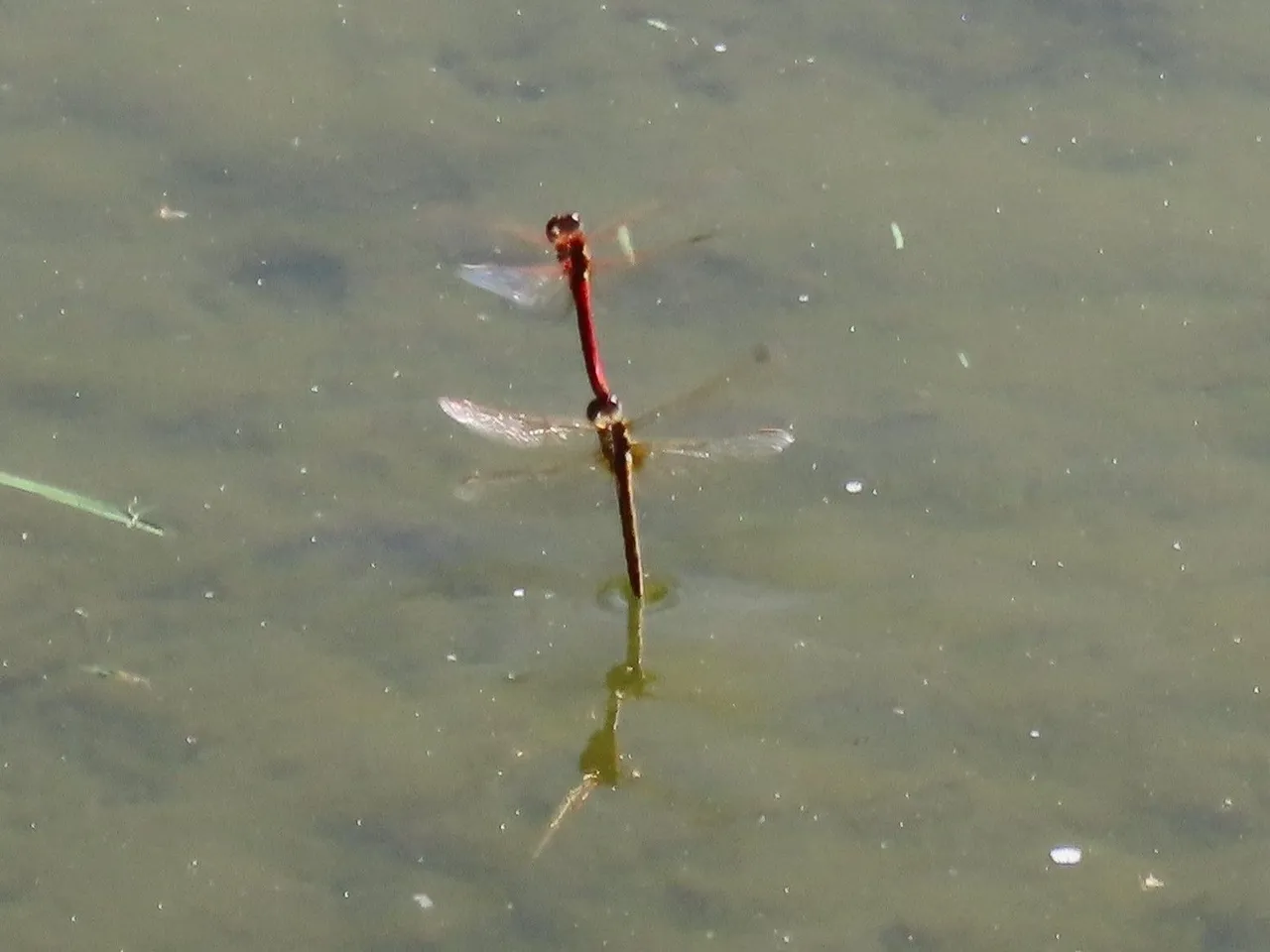
The male holds her head, to balance her, while she pops her eggs into the water.
There were three Red-veined Dropwing couples blitzing across the surface of the pond and the females were laying eggs by dipping their tails into the water. Now let me tell you that the egg laying process only lasts for an instant, before they are up in the air and flying again.
So I challenged myself to get them at the moment that they lay the eggs.
I am a bit rusty at this, as the last time that I practiced this was about 10 years ago, but thankfully I didn't do too bad today.
Come and see.
You will see what I mean about her laying the eggs in an instant in the two photos below.
She dipped her tail into the water.
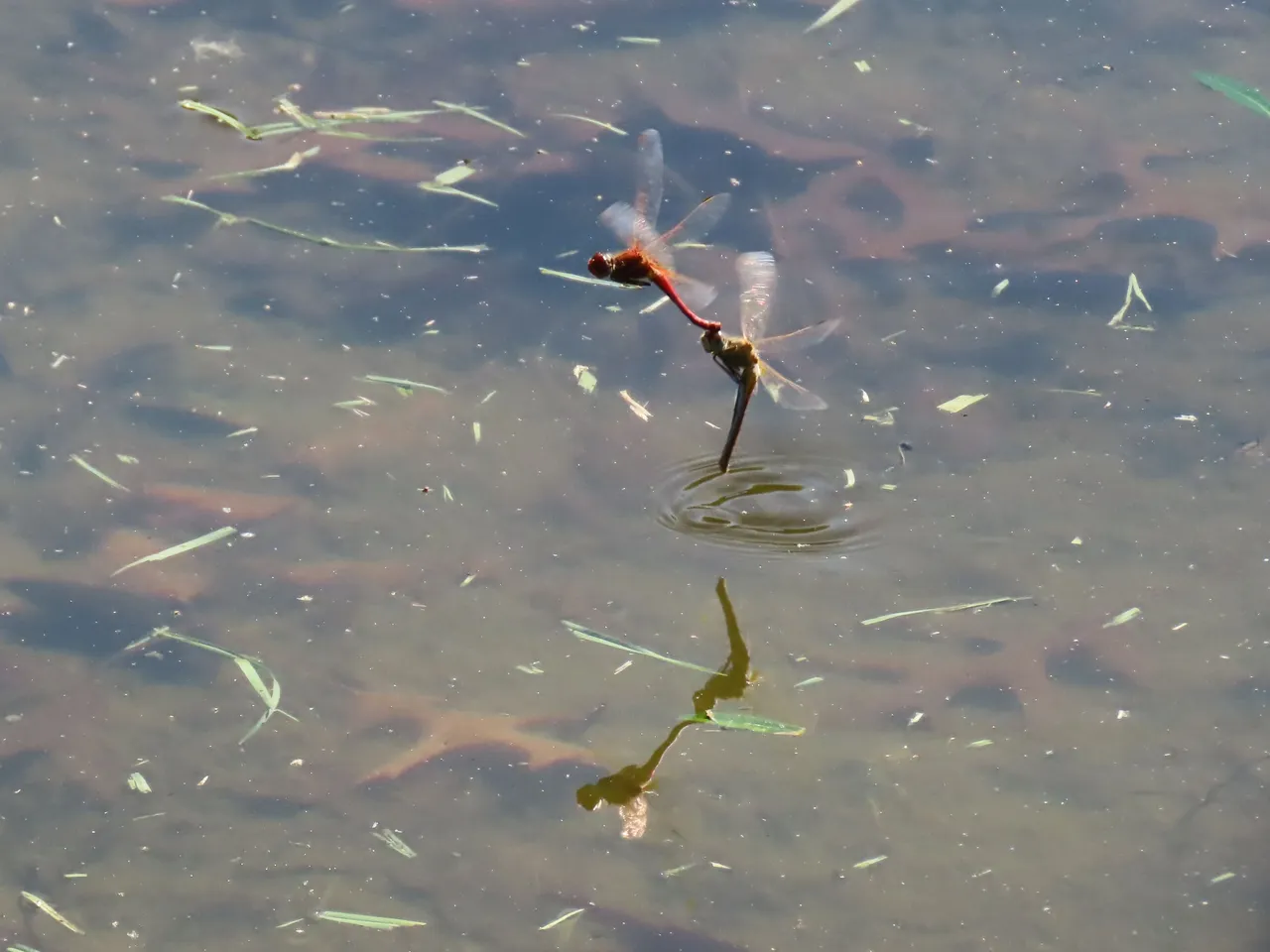
Maybe 1 second's action, and then they were up and in flight again.
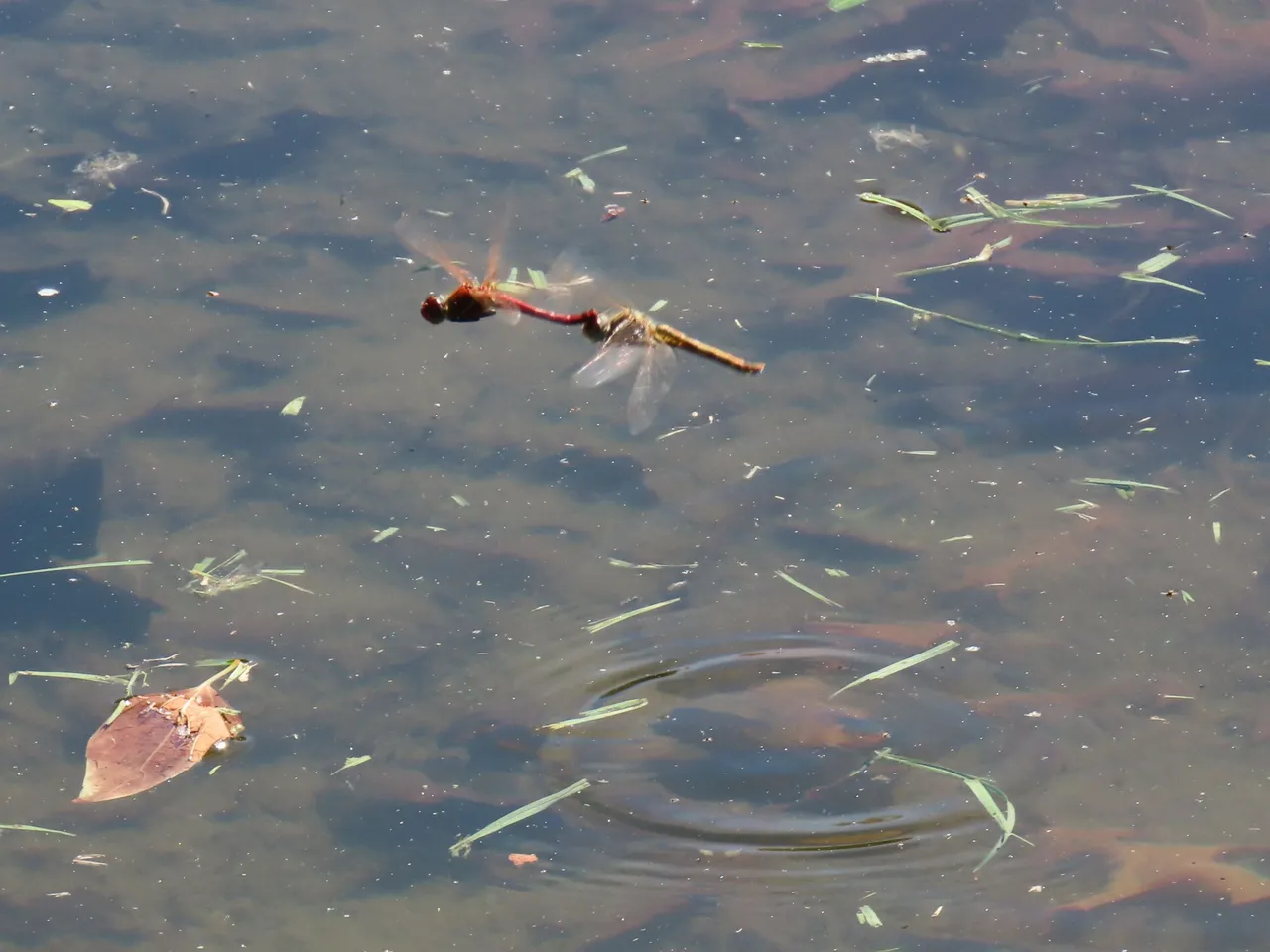
It was a lovely warm day out and the moon smiled at me.
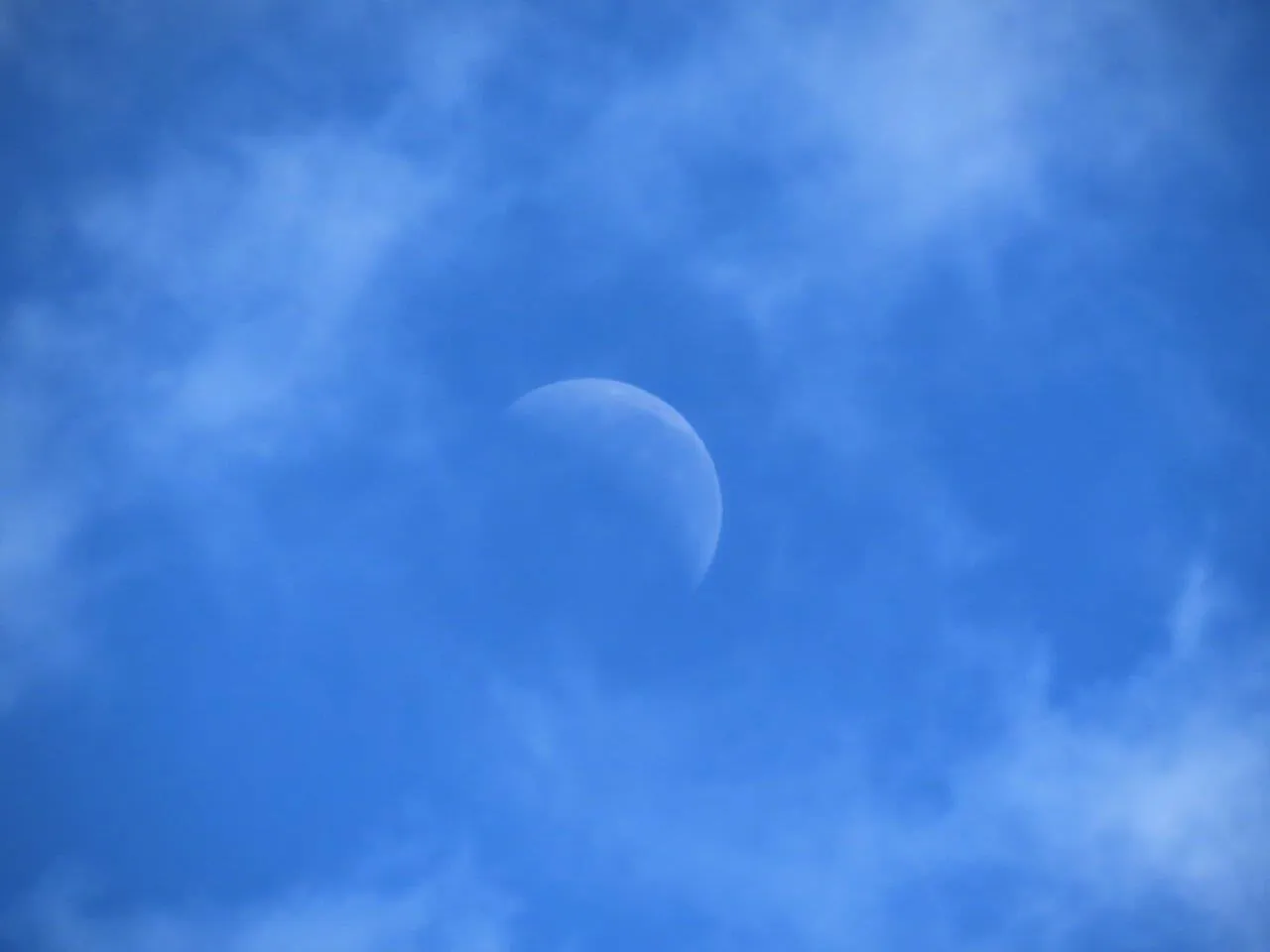
Not all dragonflies do drop egg-laying like the dropwings. See notes at the bottom of the post.
5 photos below of my tracking process and the eventual egg laying event in the 4th photo.
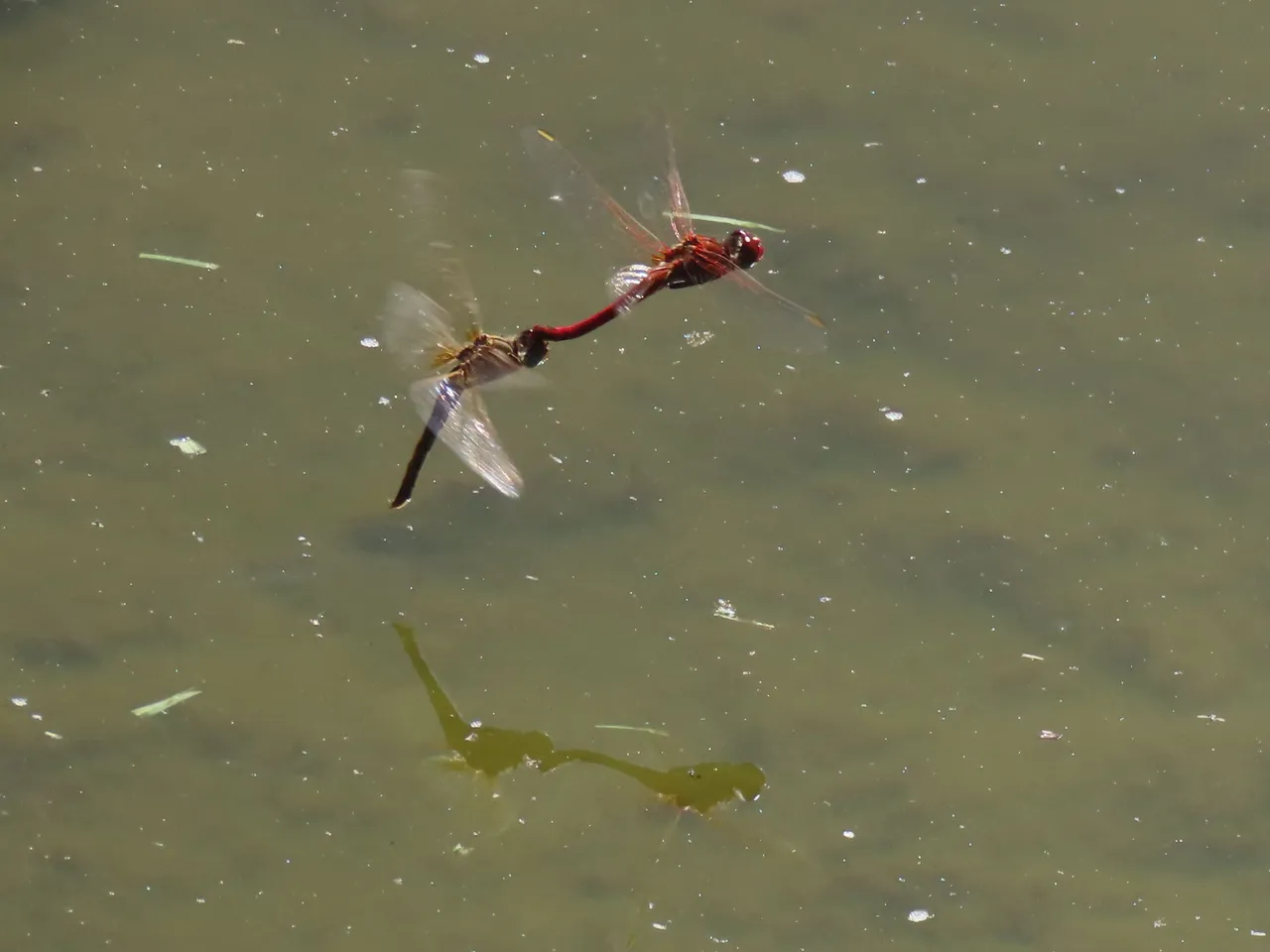
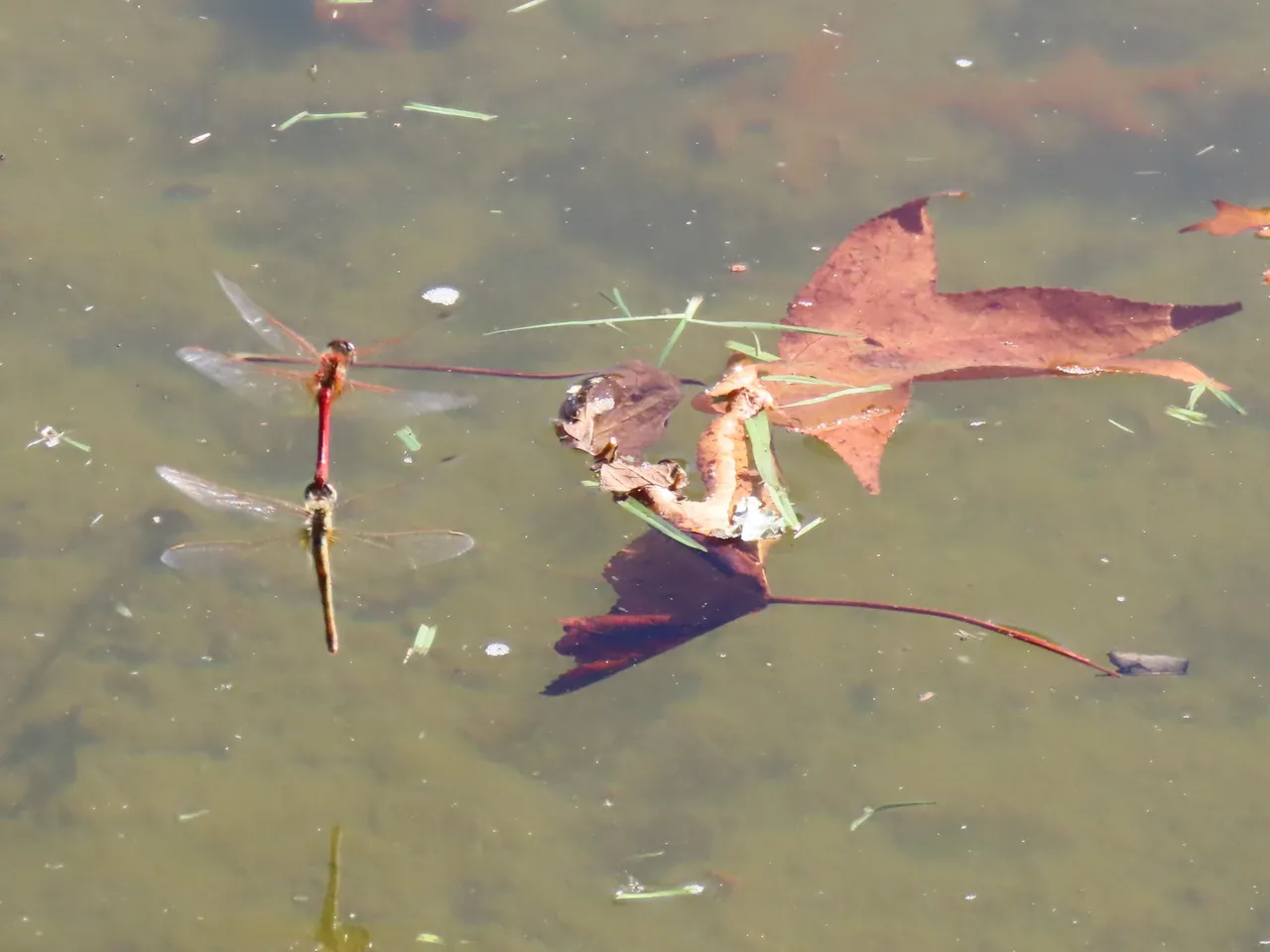
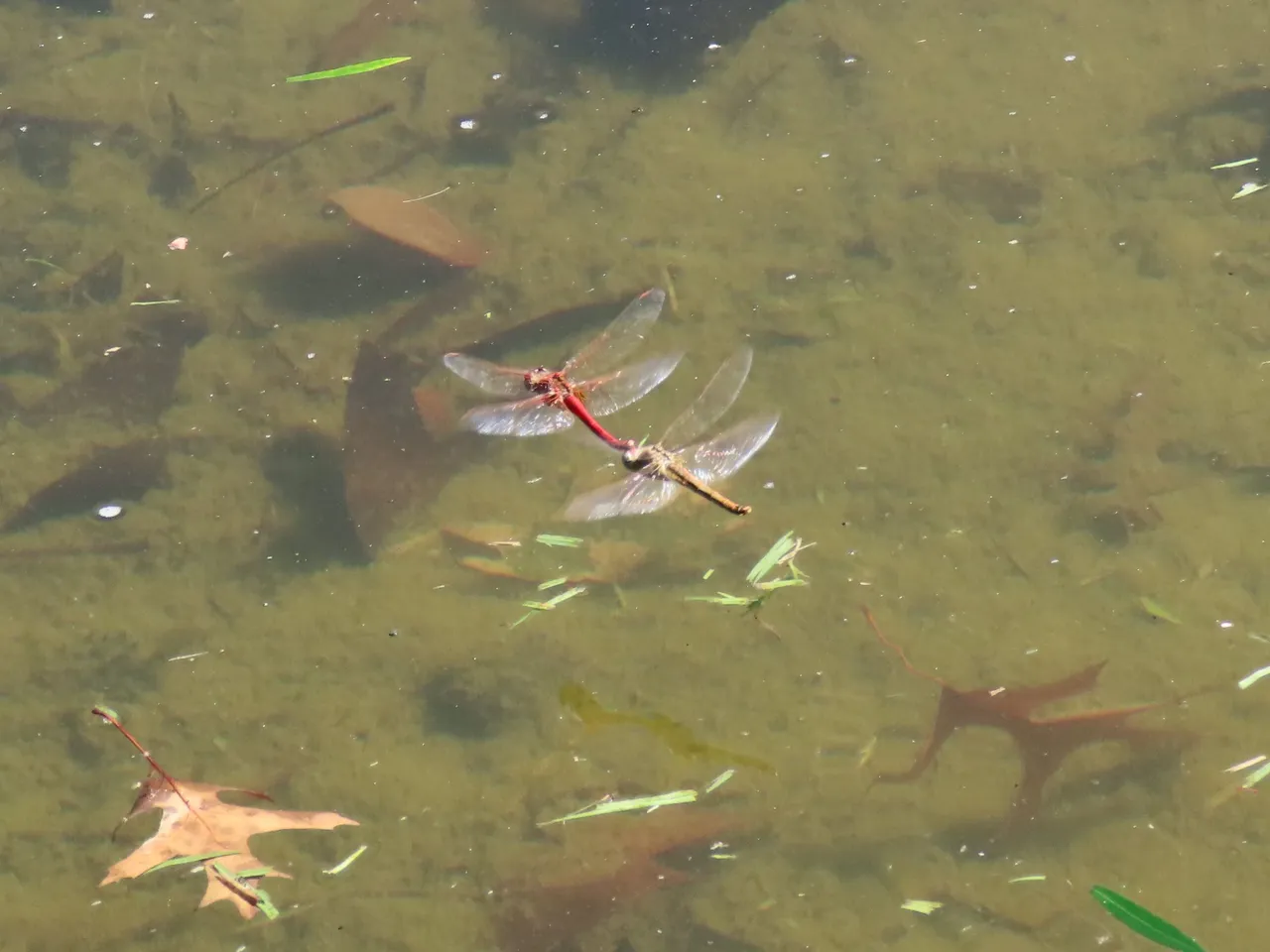
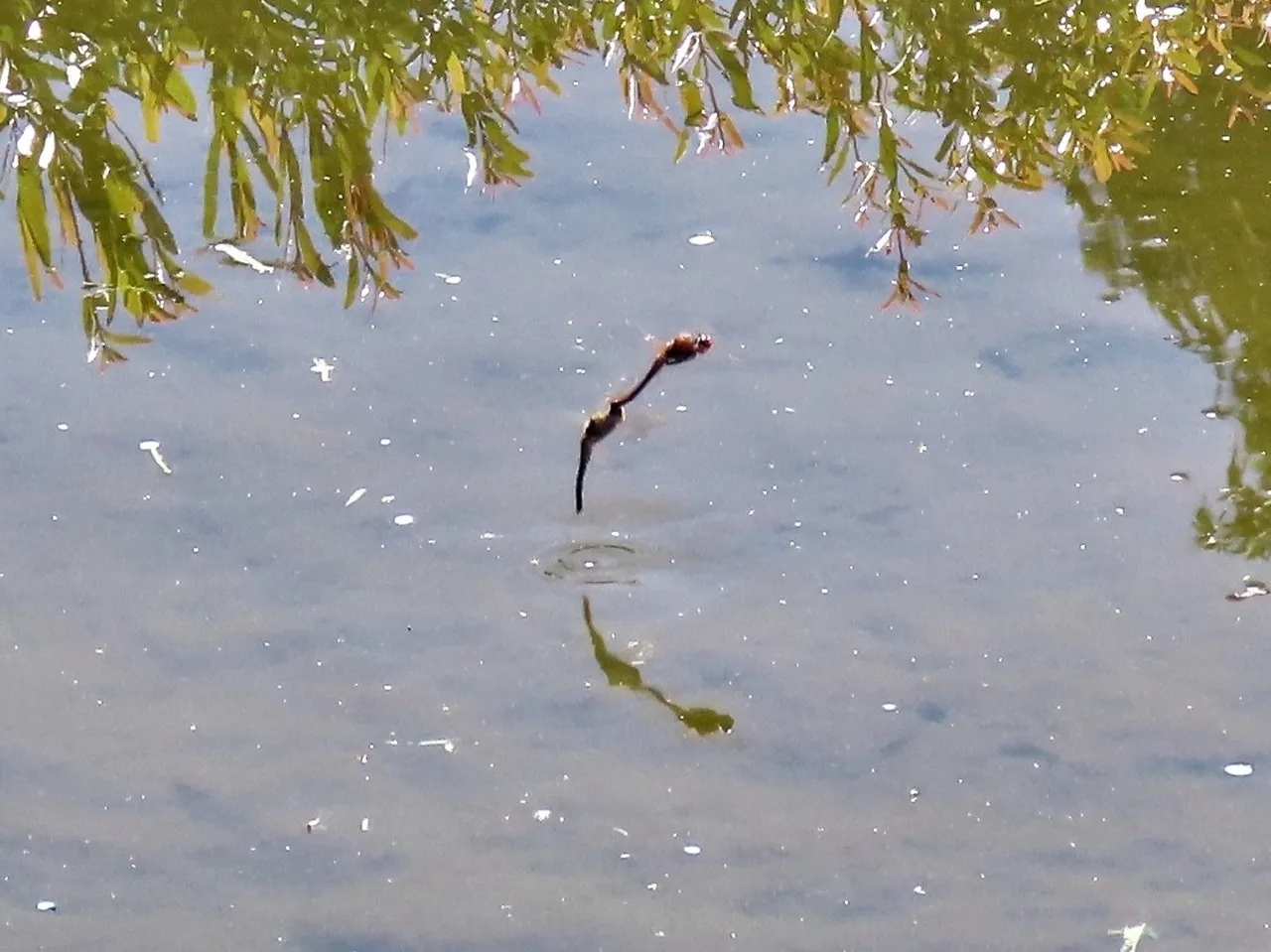
Note that I track free hand, as they never fly in a straight line, but rather in a zig-zag pattern all over the place.
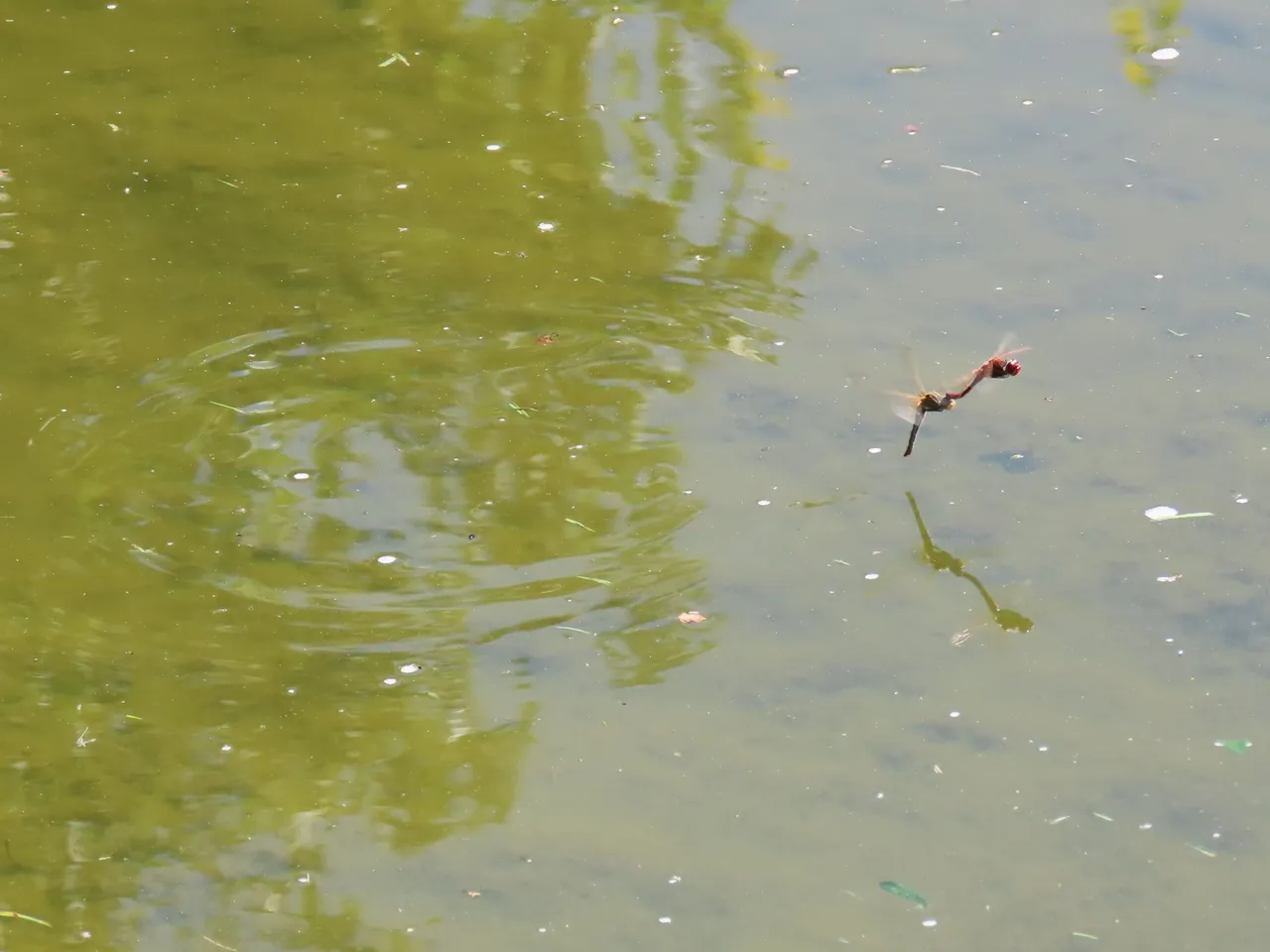
Not all dragonfly species lay their eggs like this, as others break away after the coupling and still others lay their eggs under plant leaves. The aeshnid species for example inject their eggs into plant stems.
Another interesting fact is that the male does not only clasp the female behind her head to balance her, but he also guards her against other males that want to interrupt her egg-laying process to also inseminate her.
And here is the most stunning news.
Male Odonata also have another way of minimizing the chances of rival males fertilising the female: they have a structure that serves as a "sperm-scraper", which is used just before insemination to scrape out any existing sperm that may be residing in the female from previous copulations.
Source:-Dragonflies and Damselflies of South Africa. Book ISBN 978-1-77584-184-5.
And finally, here is a close up of a male Red-veined Dropwing dragonfly (Trithemis arteriosa).
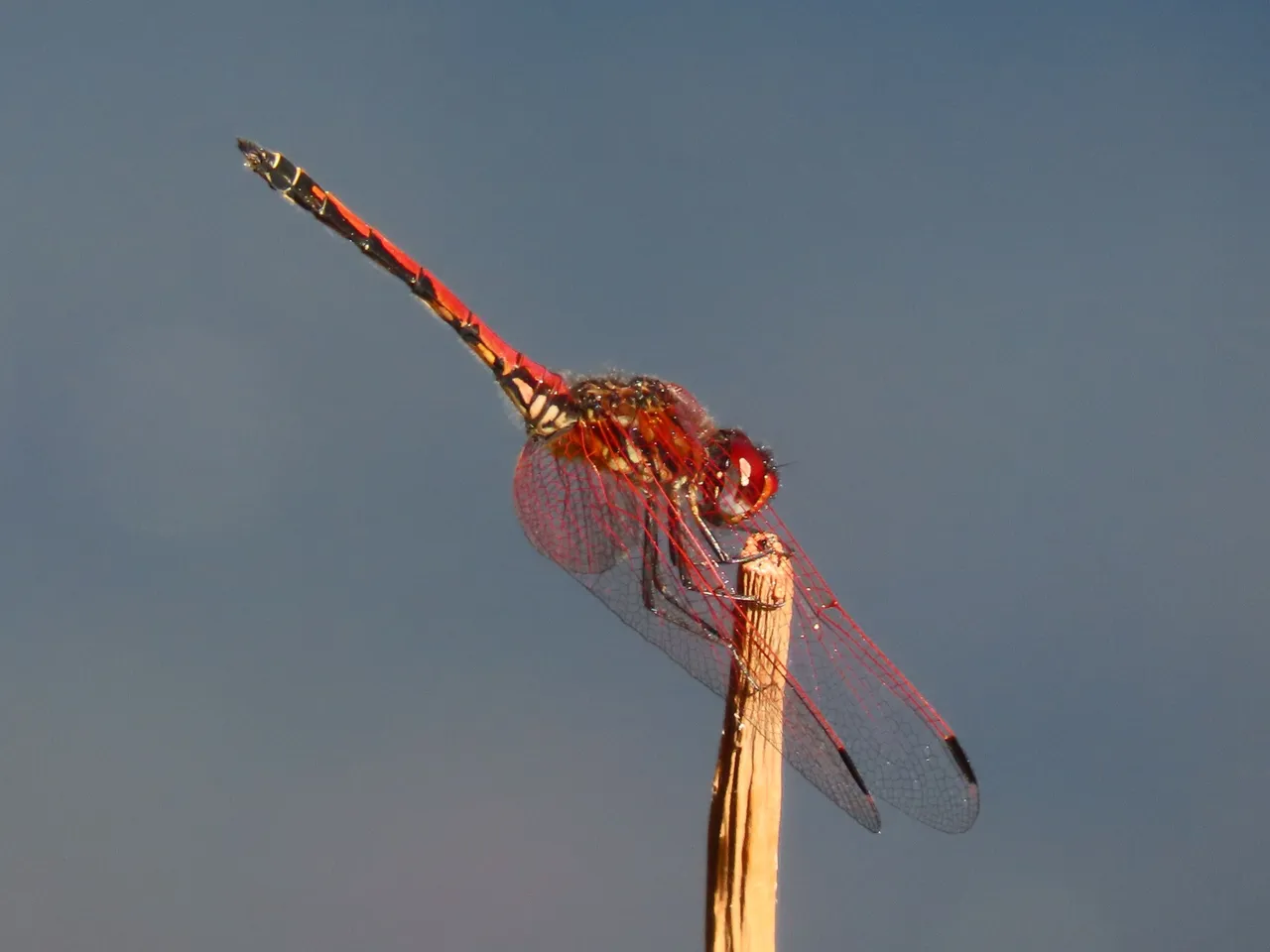
So many amazing secrets in nature that we can learn from, and their design is absolutely mind-blowing. The dragonflies have, for a long time, fascinated mankind and we know that the dragonfly was also used for the design of the first helicopter. Only difference is, that a helicopter does not have the directional flying abilities of dragonflies. They are, indeed, fascinating little critters, and I like to show you what I know about them.
I hope that you have enjoyed the pictures and the story.
And That's All Friends.
Photos by Zac Smith-All Rights Reserved.
Camera: Canon Powershot SX70HS Bridge camera.
Thank you kindly for supporting a post on behalf of @papilloncharity